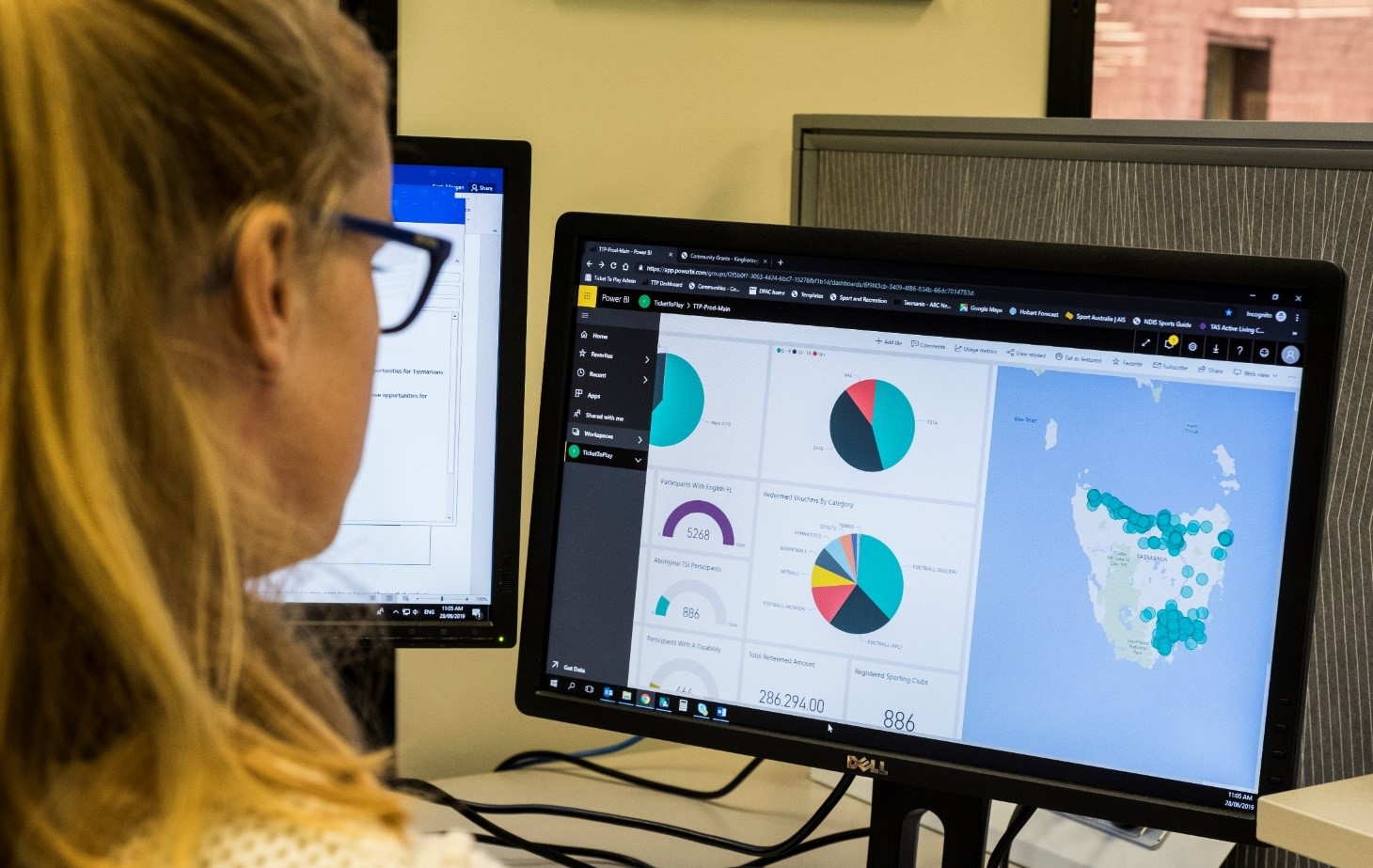
Divisions
- About the Tasmanian State Service
- Contact Us
- Aboriginal employment
- Culture of learning
- Diversity and inclusion
- Digital capability
- Employee surveys
- Employment arrangements
- Employment policy
- Managing performance
- Work health, safety and wellbeing
- Workforce planning and reporting
- Awards and Agreements
- Managing and leading change
- Senior Executives
- Legislation
- Coronavirus (COVID-19) Information for Staff
Contact Details
By phone
Find the number of a specific division or office to contact them directly or call Service Tasmania on 1300 135 513.
Our staff
Use the Tasmanian Government Directory to find staff contact details
Social media
Follow our social media accounts to keep up to date with specific programs and initiatives.
Digital Transformation and Business Innovation
Developing corporate systems using technology that provides up-to-date data and streamlined processes that enable stakeholder communication.
Empower Integration Automation Program (EIAP)
EIAP continued to be rolled-out through 2018-19. The EIAP delivers a more contemporary system which will reduce the number of manual processes and overheads associated with current payroll and people management system processes.
After a successful period of testing the Department of Justice became the first agency to migrate to the new shared database in April 2019.
The Department of State Growth also progressed its migration process and, as at the end of June 2019, was preparing to migrate in the first pay period of the new financial year 2019-20. The migration of the remaining small and medium agencies is expected to be completed by July 2020.
Joint Agency Reporting Service (JARS)
In addition to migrating to the new shared database, the Department of Justice also completed a successful pilot of JARS. This contemporary dashboard-based reporting service will also be progressively rolled-out to all agencies by July 2020. Through JARS, agencies will be able to meet current and future demands for employee data including organisational performance, longitudinal analysis, workforce management, and leave and absence management.
HRWiki
To support the implementation of both EIAP and JARS, there was an identified need to develop a human resources (HR) knowledge base that provided access to standard procedures for the use of the Empower Payroll and People Management System, and that supported skill development in other key HR knowledge areas.
In December 2018, development commenced on the HRWiki, an internal, online central point of reference for users within HR. In addition to providing up-to-date information on industrial relations, WHS, data literacy and data management, the HRWiki allows improved consultation with the TSS HR community on the development of whole-of-service policies and programs, and supports TSS HR professionals to network, collaborate, and knowledge share within the community.
The HRWiki uses proven technology, and will be available to all HR practitioners and managers within the TSS. It is password protected and only accessible to authorised users of the Tasmanian Government network (Networking Tasmania). Access to the HRWiki is being rolled-out to agencies progressively in line with EIAP and JARS.
eRecruitment
On 17 July 2018, SSMO reconnected the Tasmanian Government Jobs website to the PageUp eRecruitment System (following the security incident experienced by PageUp in June 2018). The decision to reconnect to PageUp followed the completion of an independent security review and vulnerability testing, as well as a review of PageUp’s security arrangements.
While the data breach and resulting investigation caused some disruption to recruitment within the TSS, the implementation of an interim advertising and recruitment system and processes while the PageUp system was unavailable reduced the impact of this disruption.
There were no subsequent security incidents in 2018-19.
Improvements and increased functionality to eRecruitment were explored throughout the year, with a particular focus on on-boarding and performance management modules. Enhancements were also made to the jobs website in 2018-19 to support targeted recruitment campaigns for cadets, teachers, and graduates.
In 2018-19 the jobs website attracted an average of 308,446 unique page views [1] per month.
There were around 2,530 unique page views per month of the fixed-term employment registers.
Interjurisdictional Workforce Data Analytics
The TSS, as a member of the Interjurisdictional Workforce Data Analytics Committee, contributed publicly available, aggregated workforce and Employee Survey data to the development of the National Public Sector Workforce Dashboard.
The Dashboard is a collaborative tool built by governments across Australia and made available within a secure online environment to members of the Committee to help inform policy-making, research and reporting, and allows for the comparison of workforce and employment data between jurisdictions.
The dashboard and the Committee provides the opportunity for members to contribute to interjurisdictional research projects, share knowledge and collaborate on issues affecting the public sector, and the management of workforce data.
Agency Activities
In addition to supporting EIAP migration activities, agencies reported an increased focus on developing capabilities to support digital transformation and business innovation. In 2018-19, activities included:
- improving the collection of data to support workforce planning;
- supporting innovation and building digital capabilities;
- managing large recruitment campaigns through PageUp; and
- creating a ‘digital mail room’.
2019-20 Priorities
Priority | Actions |
|---|---|
EIAP |
|
JARS |
|
HRWiki |
|
Data literacy |
|
eRecruitment |
|
Back to: Contents | Previous to: Safety in the Workplace | Next to: A Culture of Learning

